Coloring eggs for Easter can be as simple as pulling some pantry staples from your cupboard. Onion skins, canned beets, turmeric, and certain teas, are among several of the plants and spices you can use to create safe and natural dyes for your Easter eggs.
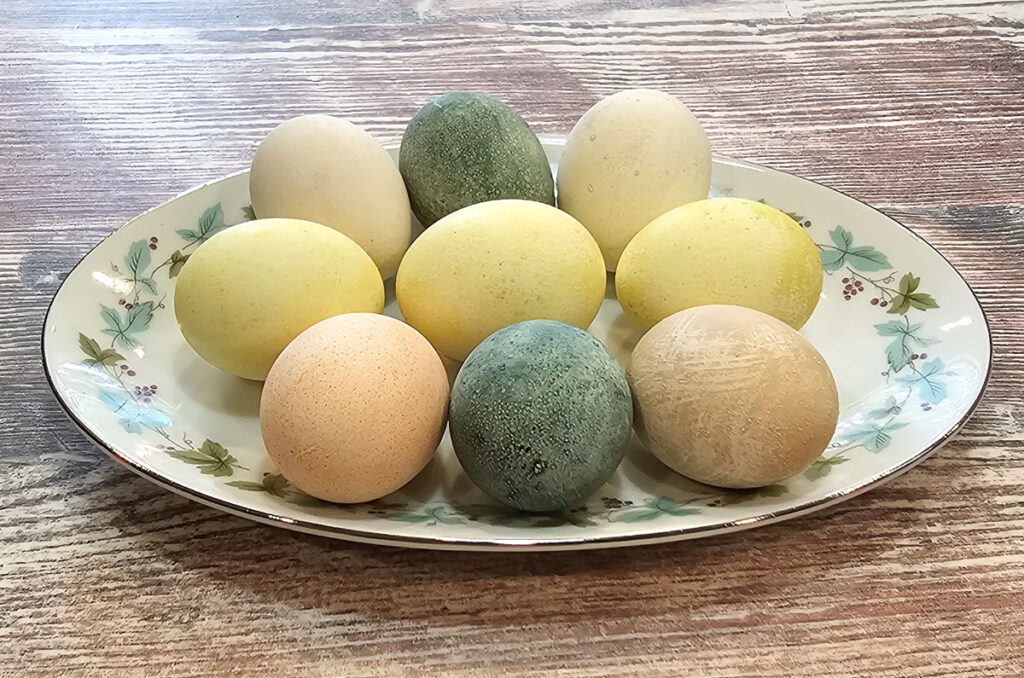
Here are some of the best natural egg coloring methods I recommend.
Items You’ll Need
Natural Dye Sources
- Raw Beets or canned beets
- Purple onion skins
- Yellow onion skins
- Hibiscus/Sorrel Tea bags
- Cranberry hibiscus leaves (dried)
- Ground turmeric
- Ground paprika
- Purple cabbage
I have also tried dried carrot greens (instead of spinach for green) and ground paprika (for reddish-brown) with fair results. The colors were softer than I wanted, but gave nice gray/green and pale brown hues, so they’re okay if you’re looking for soft, subtle tints.
If you’re feeling adventurous, you could also try: fresh spinach leaves, roselle calyxes or roselle tea, blueberries, black tea, or coffee.
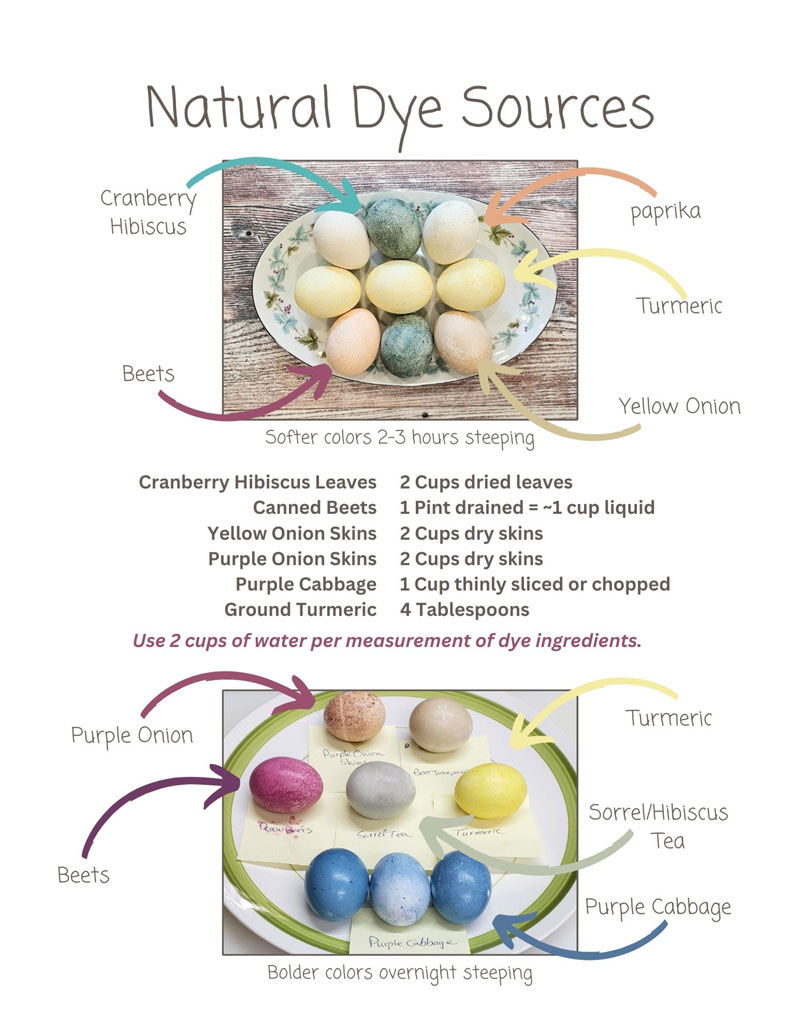
Other Ingredients
- White shell chicken eggs
- Distilled white vinegar
- Water
Kitchen Tools
- Several small cooking pots
- Widemouth pint canning jars or similar size heat-proof containers
- Measuring cups and spoons
- Fine strainer
- Cheesecloth (for straining ground spices)
- Spoons
- Paper towels for drying the eggs after dyeing
Directions
Prepare hard-boiled eggs ahead of time.
Have them setting at room temperature (or just removed from the fridge) when you begin dying.
Assemble your dye ingredients.
Here is the ratio of plant/spice to water for creating each individual dye color:
- Cranberry Hibiscus leaves – 2 cups of leaves & 2 cups of water
- Dry onion skins – 2 cups of skins & 2 cups of water
- Canned Beets – Beet juice from the jar. You’ll need 1-2 cups
- Beet Juice – actual juice dyes better than liquid from canned beets. 1-2 cups
- Raw beets – 2 cups of shredded beet root & 2 cups of water
- Turmeric – 4 Tablespoons ground turmeric & 2 cups of water
- Paprika – 4 Tablespoons ground paprika & 2 cups of water
- Purple cabbage – 2 cups shredded outer leaves (as much purple you can get) & 2 cups of water
Make the dyes.
For each dye color, add plant material and water to a small pot. Bring to a boil, then simmer for 25-30 minutes. Water will reduce by approximately half while cooking. If you are dying a lot of eggs, you may want to double or triple the amount using the ratios above.
For the ground spices, bring water to a boil, then pour over the spices in a heat-proof container using the amount of water recommended above. Let steep for 30 minutes.
Once steeping or simmer time is completed, strain dye materials in the strainer. Use cheesecloth for the turmeric and similar ground spices. Allow to cool to about room temperature. All your dye materials can be composted.
Add 1 Tablespoon of white vinegar to each 1 cup of liquid.
Dye the eggs.
Place your desired number of eggs in a glass or non-stainable container. I like to use coffee mugs for individual eggs, Pyrex cooking bowls, or glass measuring cups for several eggs the same color.
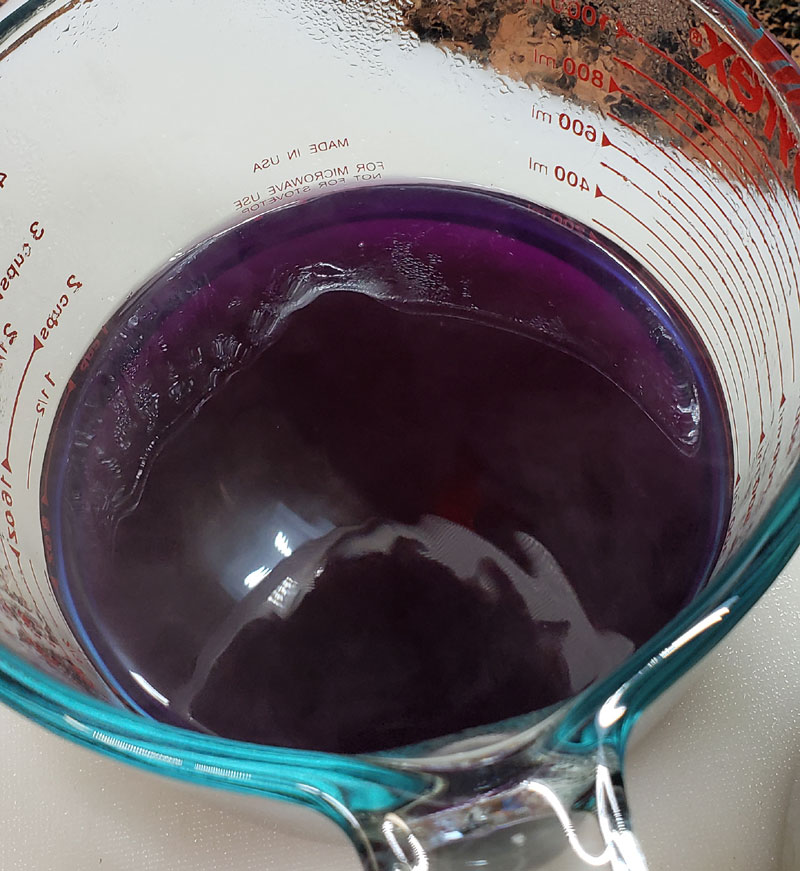
Pour dye mix over the eggs until just covered.
Put into the refrigerator and allow dyes to set into the shells. This can take anywhere from 2 hours to 24 hours, depending on how deep of a color you desire. Turmeric dyes fast. Cranberry hibiscus and Roselle also dye fast. Other colors produce better results if left overnight.
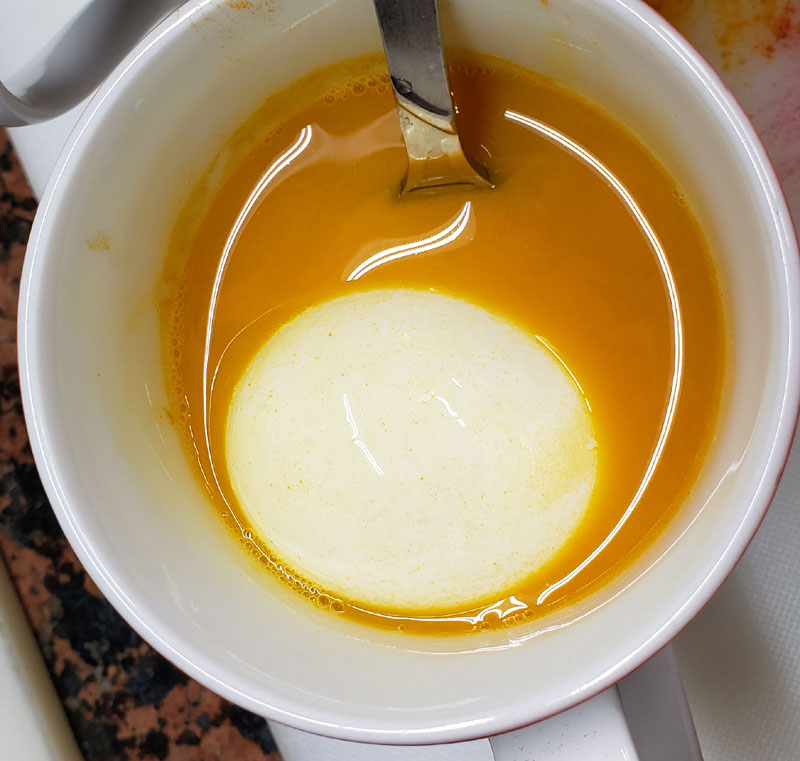
Make sure to occasionally turn the eggs in the dye to prevent pale spots from forming where the egg sits in the cup or bowl.
Once your eggs have reached your desired hue, remove them from the dye and rinse gently. Keep in mind that much of the “bloom” from dyeing will rub off, revealing a paler color.
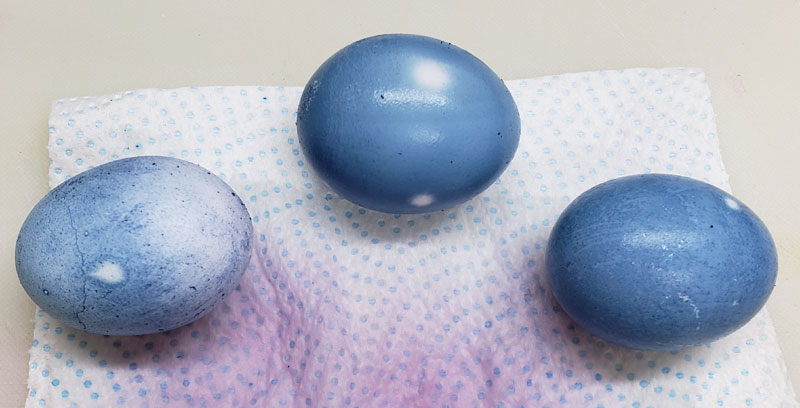
Pat dry with paper towels.
Let the eggs air-dry for about half an hour in the refrigerator. You can then rub them with a tiny bit of vegetable oil to give them a gentle sheen.
Your Easter eggs are now ready to enjoy!
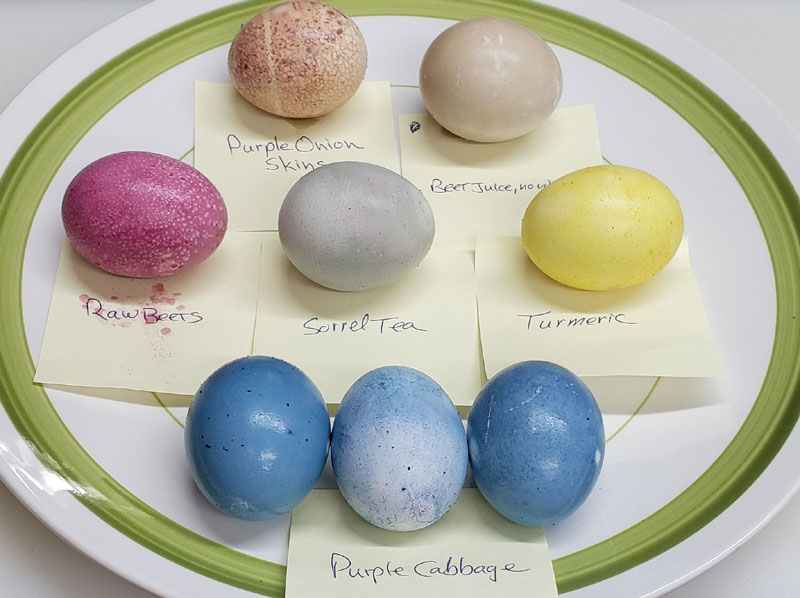
FAQs
No, only the color is transferred to the egg shells.
It is only safe to use plants that you would eat. Many plants are toxic and unsafe for dyeing foods such as eggs. Also, it’s best to use plants that transfer color well. The plants and spices I’ve used have successfully transferred colors to the eggshells.
Yes, you can, but the colors will be more muted or different than you might expect. White eggshells are best for creating bright colored Easter eggs.
Yes! My kids used to draw Easter symbols and write names (Grandma, Mom, Dad, etc.) on the eggs before dyeing them. Make sure the dye is room temperature or cooler so the wax doesn’t melt. Most children’s crayons are non-toxic, so they should be safe.